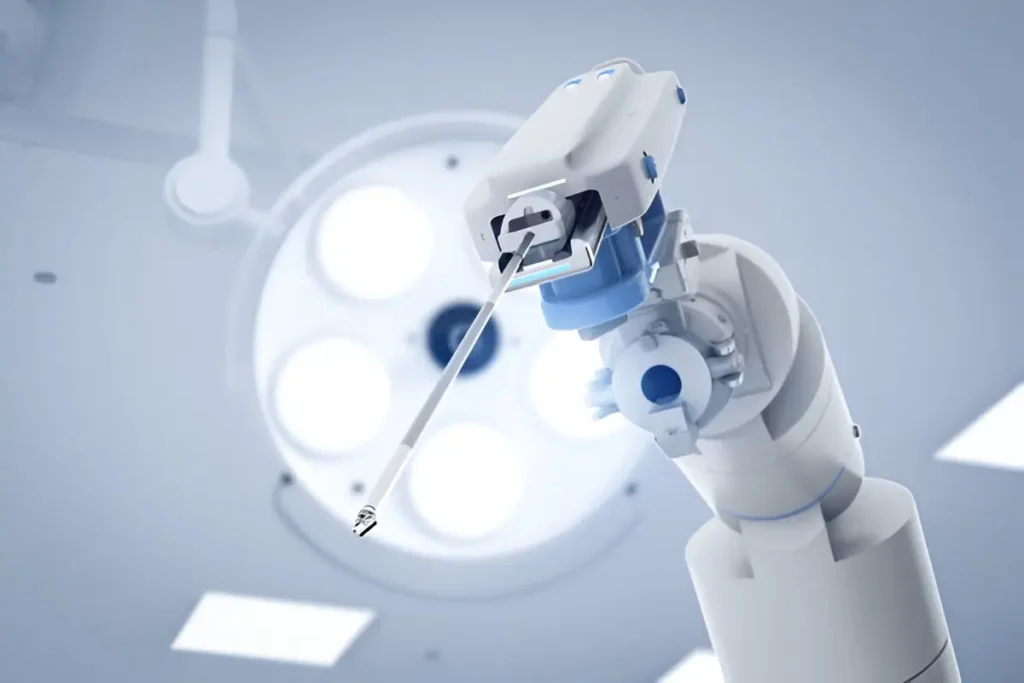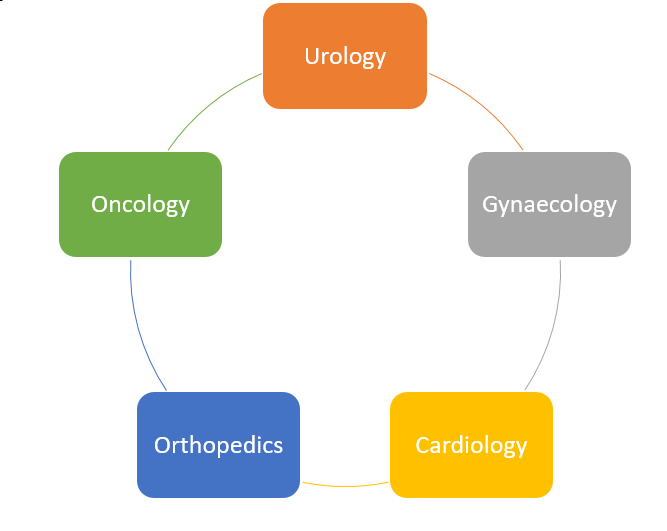Imagine a world where surgeries are faster, safer, and more precise than ever before. A world where surgeons can perform complex procedures with unmatched accuracy, and patients experience shorter recovery times and fewer complications. This isn’t science fiction—it’s the reality of robotic surgery, a groundbreaking innovation that’s reshaping the medical landscape. How Robotics is Transforming Surgery is crucial for everyone to understand.

In recent years, robotics has emerged as a game-changer in the field of surgery. From minimally invasive procedures to complex operations, robotic systems are enhancing the capabilities of surgeons and improving outcomes for patients. But how exactly is robotics transforming surgery? Let’s dive into the details.
How Robotics is Transforming Surgery has been a focal point for many advancements in the medical field. The integration of robotic systems into surgical procedures illustrates their growing importance in modern healthcare.
What is Robotic Surgery?
Robotic surgery involves the use of advanced robotic systems to assist surgeons during procedures. These systems are controlled by skilled surgeons, who use a console to manipulate robotic arms equipped with tiny instruments and high-definition cameras. The result? Unprecedented precision, flexibility, and control.
Understanding how robotics is transforming surgery allows us to appreciate the advancements made in surgical precision and patient outcomes.
The most well-known robotic surgical system is the da Vinci Surgical System, which has been used in millions of procedures worldwide. However, new technologies are constantly emerging, pushing the boundaries of what’s possible in the operating room.
One of the key elements of how robotics is transforming surgery lies in the enhanced capabilities that these systems provide to surgeons.
Moreover, how robotics is transforming surgery is evident in its application across various medical specialties, making it a versatile tool for modern healthcare.
Each of these advancements demonstrates how robotics is transforming surgery and improving surgical outcomes for patients.
How Robotics is Transforming Surgery
As we explore the benefits, we see how robotics is transforming surgery, allowing for quicker and safer procedures.
1. Enhanced Precision
Robotic systems offer a level of precision that’s difficult to achieve with traditional methods. The robotic arms can make tiny, controlled movements that eliminate the risk of human error. This is especially beneficial for delicate procedures, such as neurosurgery or cardiac surgery, where even a millimeter can make a difference.
Ultimately, how robotics is transforming surgery is about improving the overall patient experience through innovative technology.
2. Minimally Invasive Procedures
One of the biggest advantages of robotic surgery is its ability to perform minimally invasive procedures. Instead of large incisions, surgeons can make small, precise cuts, reducing trauma to the body. This leads to less pain, fewer complications, and faster recovery times for patients.
3. Improved Visualization
Robotic systems come equipped with high-definition 3D cameras that provide surgeons with a magnified, crystal-clear view of the surgical site. This enhanced visualization allows for greater accuracy and better decision-making during procedures.
This capability is just one of the reasons why how robotics is transforming surgery is such a significant topic in today’s medical discussions.
How robotics is transforming surgery also extends to ongoing research and development to further enhance these systems.
4. Reduced Surgeon Fatigue
Traditional surgeries can be physically demanding, requiring surgeons to stand for hours in awkward positions. Robotic systems eliminate this strain by allowing surgeons to operate from a comfortable seated position. This reduces fatigue and enables surgeons to focus better on the task at hand.
5. Access to Hard-to-Reach Areas
Robotic instruments are designed to reach areas of the body that are difficult to access with traditional tools. This is particularly useful for procedures in the pelvis, throat, or deep within the abdomen.
6. Faster Recovery Times
Because robotic surgery is less invasive, patients often experience shorter hospital stays and quicker recoveries. This not only improves the patient experience but also reduces healthcare costs.
Real-World Applications of Robotic Surgery
Robotic surgery is being used in a wide range of medical fields, including:
- Urology: For procedures like prostatectomies and kidney surgeries.
- Gynecology: For hysterectomies and endometriosis treatment.
- Cardiology: For heart valve repairs and coronary artery bypasses.
- Orthopedics: For joint replacements and spinal surgeries.
- Oncology: For tumor removals and cancer treatments.

The Future of Robotic Surgery
The potential of robotic surgery is immense, and the technology is evolving rapidly. Here are some exciting developments on the horizon:
Smaller, Smarter Robots: Advances in nanotechnology could lead to the development of microscopic robots capable of performing surgeries at the cellular level.
In summary, how robotics is transforming surgery represents a new era in surgical practice, with ongoing advancements expected in the future.
Understanding how robotics is transforming surgery helps patients make informed decisions about their treatment options.
AI Integration: Artificial intelligence could soon assist surgeons by analyzing data in real-time and providing recommendations during procedures.
As we conclude, it’s clear that how robotics is transforming surgery will have lasting impacts on future surgical practices.
Telesurgery: Surgeons may one day perform procedures remotely, using robotic systems to operate on patients in different parts of the world.
Challenges and Considerations
While robotic surgery offers numerous benefits, it’s not without its challenges. The cost of robotic systems can be prohibitive for some hospitals, and there’s a steep learning curve for surgeons. Additionally, not all procedures are suitable for robotics, and traditional methods may still be the best option in certain cases.
Why This Matters for Patients
For patients, the rise of robotic surgery means better outcomes, fewer complications, and a faster return to normal life. It’s a testament to how technology can improve healthcare and enhance the quality of life for millions of people.
Conclusion
Robotic surgery is no longer a futuristic concept—it’s here, and it’s transforming the way surgeries are performed. By combining the skill of surgeons with the precision of robotics, this technology is setting new standards for patient care.
If you’re considering surgery, it’s worth exploring whether a robotic-assisted procedure is right for you. And if you’re a healthcare professional, staying informed about these advancements can help you provide the best possible care for your patients.
At Healwell Surgitech, we’re passionate about the latest innovations in surgical technology. Stay tuned to our blog for more insights into how robotics and other advancements are shaping the future of healthcare.
Found this article helpful? Share it with your friends and colleagues! And don’t forget to subscribe to our newsletter for more updates on the latest in surgical technology and healthcare innovation.
Disclaimer: The content participated in the blog posts is for information purpose only. The purpose of content, visuals and images and other accoutrements of the website are to promote broad consumer understanding and knowledge of health related motifs. It isn’t intended to be a cover for any of the treatment, judgement or medical advice. Always seek the advise of good healthcare provider with any questions, no way to disregard professional medical advice just on the basis of information shared on the website.